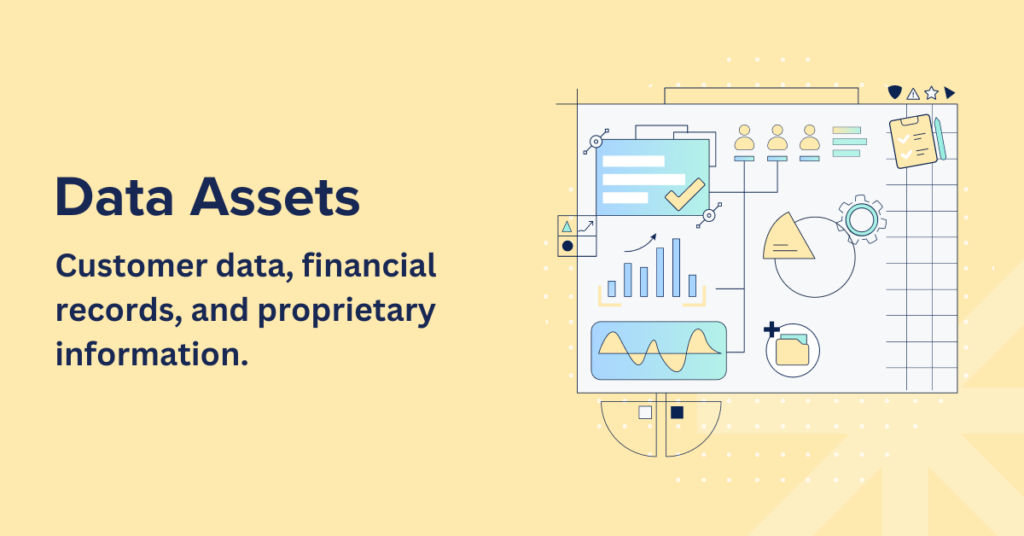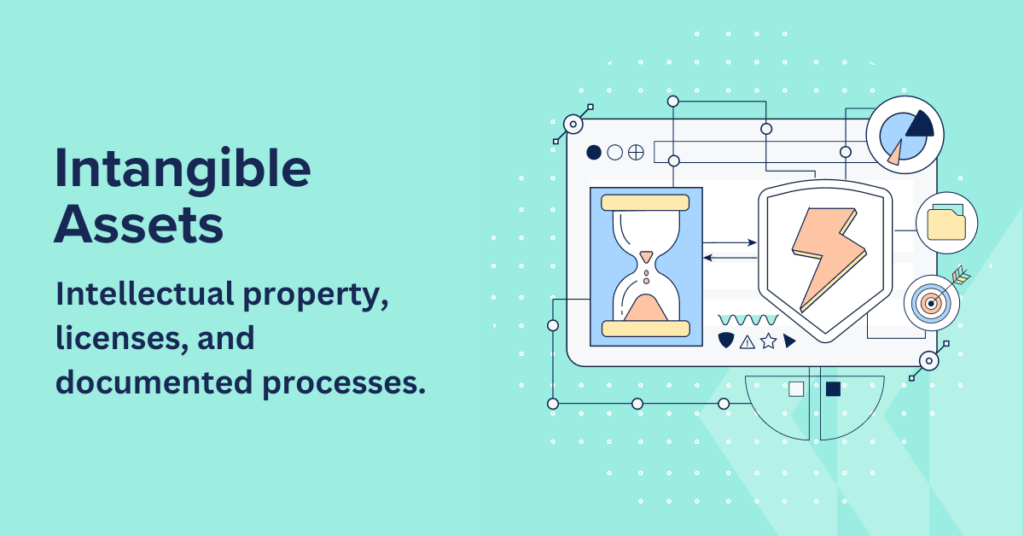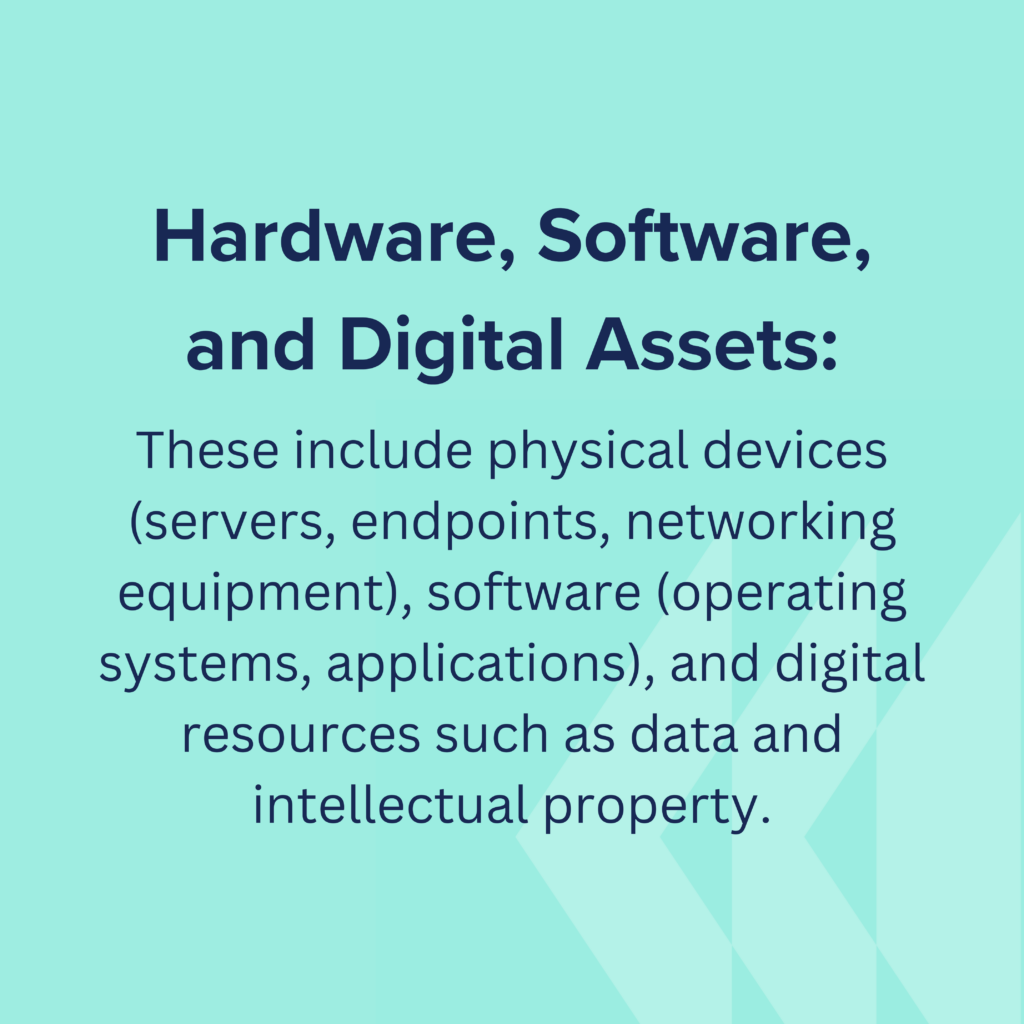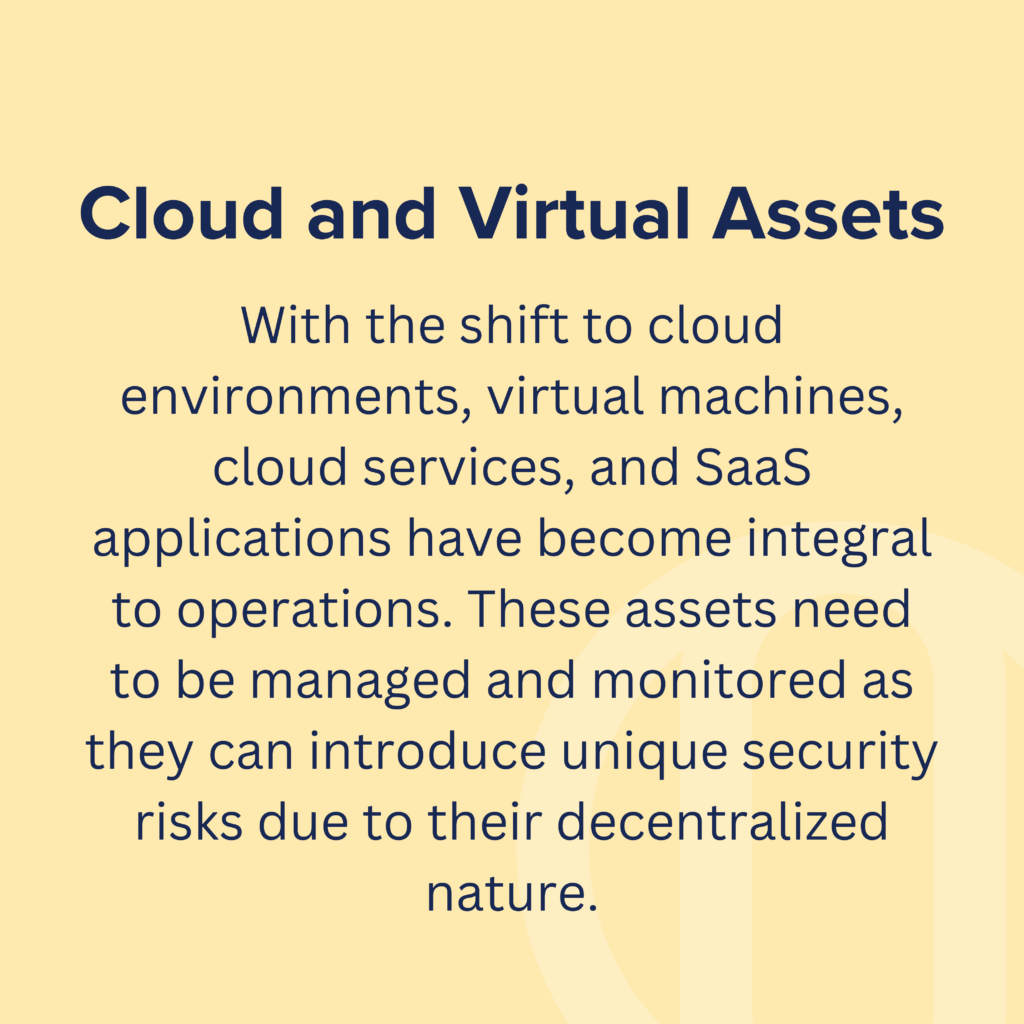Chapter 2: Asset Discovery and Inventory
Effective asset management starts with understanding what assets the organization owns. Regular and automated discovery of assets ensures nothing goes untracked.
What are Assets?
Creating a shared vocabulary around what constitutes an asset is essential for effective asset management. Assets encompass more than just physical equipment like servers and laptops; they include software, data repositories, cloud services, and even intangible elements such as intellectual property and licenses. Establishing a common understanding among stakeholders helps ensure that everyone recognizes what needs to be tracked and protected. This shared definition enables better collaboration across departments and ensures that all critical resources are considered in security planning, minimizing the risk of overlooked vulnerabilities.
Assets can be categorized into several types, including:




Defining these categories helps streamline asset discovery and ensures comprehensive tracking.
Types of Assets
Assets can be categorized in various ways, depending on their function and the risks they pose. Understanding the types of assets your organization holds is the first step in managing them effectively.


Tools for Asset Discovery
Effective asset management starts with thorough asset discovery. There are numerous tools available that automate the discovery of both hardware and software assets across networks, such as Configuration Management Databases (CMDBs), asset management systems, and SIEM tools.
Tools such as RMM (Remote Monitoring and Management) platforms, network scanning software, and even DHCP servers can help identify assets. While these tools provide insights into technological assets, they often miss non-digital assets such as processes and documentation. Ensuring a complete asset inventory may require combining automated scans with manual audits and cross-department communication.
Maintaining Asset Inventory
Once assets are discovered, maintaining an up-to-date inventory is critical. This involves regular audits, using tools that provide real-time updates, and ensuring that the inventory is comprehensive, including hardware, software, digital assets, and virtual/cloud resources.
An essential aspect of asset management is assigning ownership. Every asset should have a designated owner responsible for its security and upkeep. This ensures accountability and helps integrate asset management with broader security measures. For example, while IT may maintain an HR system, HR would be responsible for the data it contains.
How detailed to get in your asset inventory?
One of the biggest challenges in asset management is determining the right level of detail for your asset inventory. Too little detail, and you may miss critical security, compliance, or operational risks. Too much detail, and your inventory becomes overwhelming and difficult to maintain.

The level of granularity depends on several factors:
- Regulatory Compliance: If your organization is subject to industry regulations (e.g., HIPAA, PCI-DSS, NIST, or ISO 27001), compliance requirements will dictate how specific your asset tracking needs to be. For example, in healthcare, each workstation handling electronic protected health information (ePHI) must be identified and classified accordingly.
- Security & Risk Management: A more detailed asset inventory helps improve security posture by identifying assets that store or process sensitive data, their ownership, and their potential vulnerabilities. Without this, it’s difficult to apply appropriate security controls or respond effectively to incidents.
- Insurance & Financial Impact: Even if your organization is not bound by strict regulations, maintaining a detailed asset inventory can be crucial for insurance claims in the event of disasters like fires, hurricanes, or theft. A well-maintained inventory allows you to assess financial losses accurately and ensure proper coverage.
Striking the right balance ensures that your inventory is comprehensive yet manageable.
Example: Defining Workstations with the Right Level of Detail
When categorizing workstations, different levels of granularity may be appropriate depending on the organization’s size, industry, and security needs.
| Level of Detail | Example | Pros & Cons |
| Too General | Workstation #1 | Simple to track, but lacks critical context for security, compliance, and risk management. |
| Right Level of Detail | HR Workstation Stores PIIOwner: HR | Provides necessary context for security controls, compliance, and risk assessment without excessive complexity. |
By ensuring that asset records capture ownership, function, and data sensitivity, organizations can enhance their security posture, improve compliance, and simplify incident response.
Continuously updating and communicating to stakeholders
An asset inventory is only as effective as its accuracy, which is why continuous updates are essential. As assets are added, modified, or decommissioned, maintaining an up-to-date inventory ensures that the organization’s security posture remains strong and aligned with current operational needs. Regular updates should be coupled with consistent communication to stakeholders to ensure they are aware of any changes that might affect security measures, compliance efforts, or business processes. This transparency fosters collaboration, enhances decision-making, and ensures that all relevant parties have the context needed to support the organization’s security strategy.